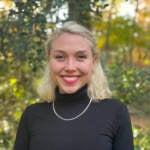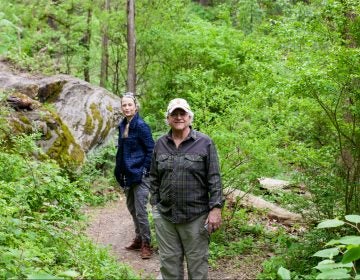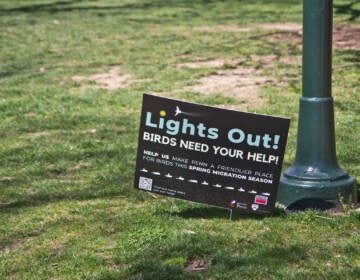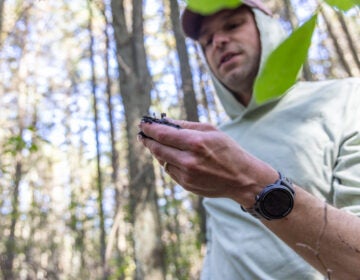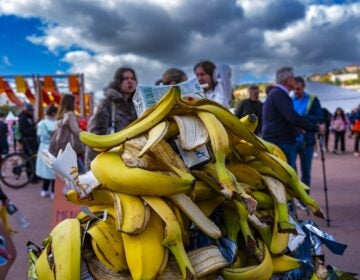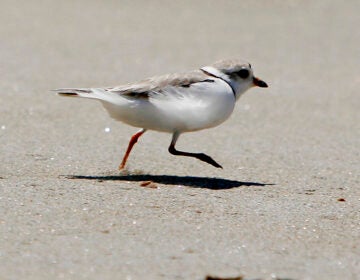Hey nature nerds, you could help all of us understand climate change in the Philly area
Since 2019, Philadelphians have competed in the City Natural Challenge by logging species of plants and animals. The records are quite useful for scientists.
Listen 4:00
Navin Sasikumar, one of the organizers of the City Nature Challenge in Philadelphia, looks for insects. (Sophia Schmidt/WHYY)
Navin Sasikumar’s curiosity is infectious. As he walks through the woods at Wissahickon Valley Park, his eyes scan the dirt paths for insects. He lifts up rocks, turns over leaves, picks out the songs of birds overhead, and investigates a mysterious black fungus.
“I have no idea what that is,” he said. “But I’m going to take a photo.”
Sasikumar is one of the people who first entered the Philadelphia area into a global wildlife-spotting competition called the City Nature Challenge in 2019. By day, he’s a software engineer for a healthcare company. But in his free time, he wanders through the woods with a pair of binoculars, volunteers with the Delaware Valley Ornithological Club, and organizes the City Nature Challenge in Philly and its surrounding counties.
“I love going out with people and seeing what we can find,” he said. “I love making sure that people know there’s nature around Philly.”
The City Nature Challenge is a friendly competition among cities around the world to see which can document the most species and engage the most people during a few days each spring. Participants snap photos of the plants, animals, and fungi they find, then enter the records into a platform called iNaturalist, which helps wildlife enthusiasts identify species and share their observations — and doubles as a global database on biodiversity. The observation period for this year’s City Nature Challenge is over, and results are expected on May 9.
This year, Philly and its surrounding counties are going up against cities like Harare in Zimbabwe, Moscow, and Dubai in a hybrid collaborative and competitive challenge (worldwide results were reported cumulatively the past two years, rather than by individual cities, because of the pandemic.) As of Wednesday, the Philly area had logged close to 2,000 different species and was ranked eighth worldwide, behind cities including Hong Kong, Cape Town, and Boston.
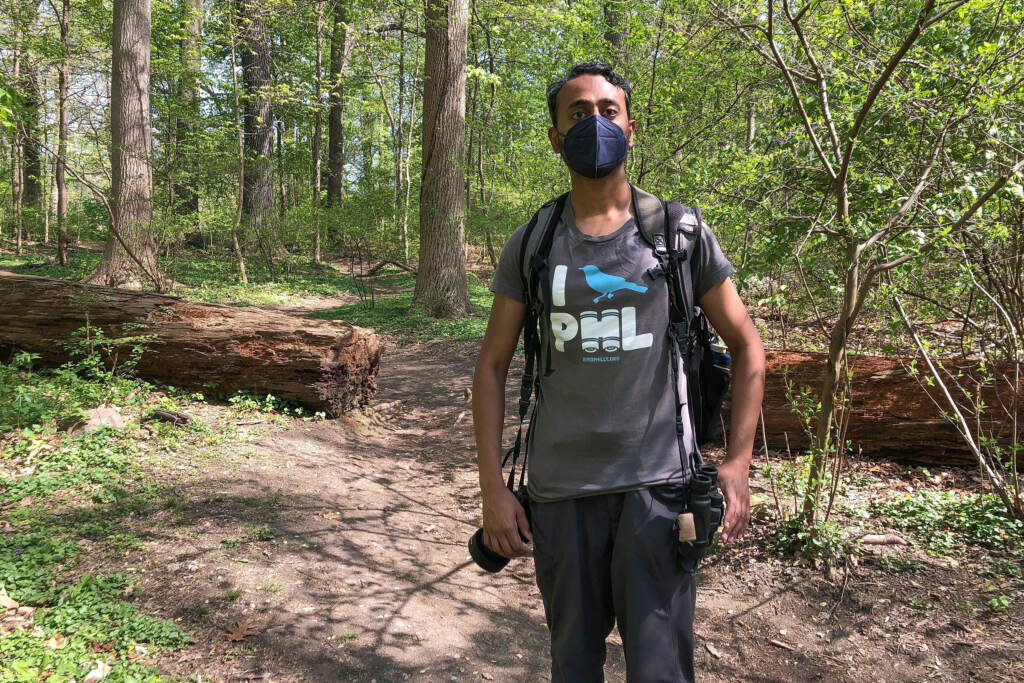
Even if the Philly area does not win, species sleuthing participants did will not be in vain. Sasikumar, a self-described “iNaturalist nerd,” says each entry citizen scientists make on the platform becomes a data point — which could serve as a record of climate change.
“Because the City Nature Challenge happens at the same time every year over a period of time, we will have enough data to be able to model the effects of climate change and see how it’s affecting the flora and fauna,” he said. “When things are blooming, for example, when birds are migrating, when insects are emerging.”
An ‘untapped resource’ for scientists
Scientists are already starting to use data from iNaturalist in studies looking at the impacts of global warming and other types of environmental change. The platform operates all year round — not just during the City Nature Challenge — and hosts over 100 million observations and counting. Records become “research-grade” data when other citizen scientists confirm identifications, and are then available to scientists.
“iNaturalist records are one of the sort of greatest untapped resources in modern ecology, because it’s so much data,” said Matt Forister, an insect ecologist at the University of Nevada, Reno.
Forister used iNaturalist as one of a few data sources in a study published last year in the journal Science, which showed the number of butterflies has dropped in the warming American west.
Now Forister is working on a study using iNaturalist data and other sources to look at where butterflies are actually sighted, compared to their historic ranges.
“So I can give government agencies and other folks a list of, here’s your top 30 or top 50 species that you should pay attention to — because they might be declining,” he said.
Another study that used iNaturalist data found coastal species moving north during marine heatwaves in the northeast Pacific. Eric Sanford, the lead author and a professor at the University of California Davis, said the crowd-sourced data supplemented more traditional research methods.
“Our team of collaborators was a small number of scientists, so we have limited numbers of pairs of eyes, and we can’t be everywhere at once looking for unusual species,” he said. “It was a way to greatly expand our observation power.”
But iNaturalist data has its limitations, Sanford said. Citizen scientists aren’t logging species systematically as professional scientists might do — and they might be more drawn to photogenic species or species that are easy to identify.
“The data is very opportunistic,” Sanford said. “People don’t go evenly to all locations along the coast. And getting abundance data is difficult because you don’t know if people have seen all of the species that are there. Some species are easier to see than others.”
But for a look at where members of a species are showing up, citizen science data is great.
“A single photograph of a colorful nudibranch that someone recorded way up in Northern California where it had never been seen before, is a really valuable data point,” Sanford said. “It only takes one person in one photograph to confirm that record.”
Forister, the butterfly researcher, admits iNaturalist data presents challenges. But he thinks scientists can build models to account for them.
“So let’s say that people only rarely report a dull, non-charismatic species,” he said. “Well, if we have the right statistical model for that, then we have an expectation for it. And if they see it even less than that, then we’ll be able to pick up that pattern.”
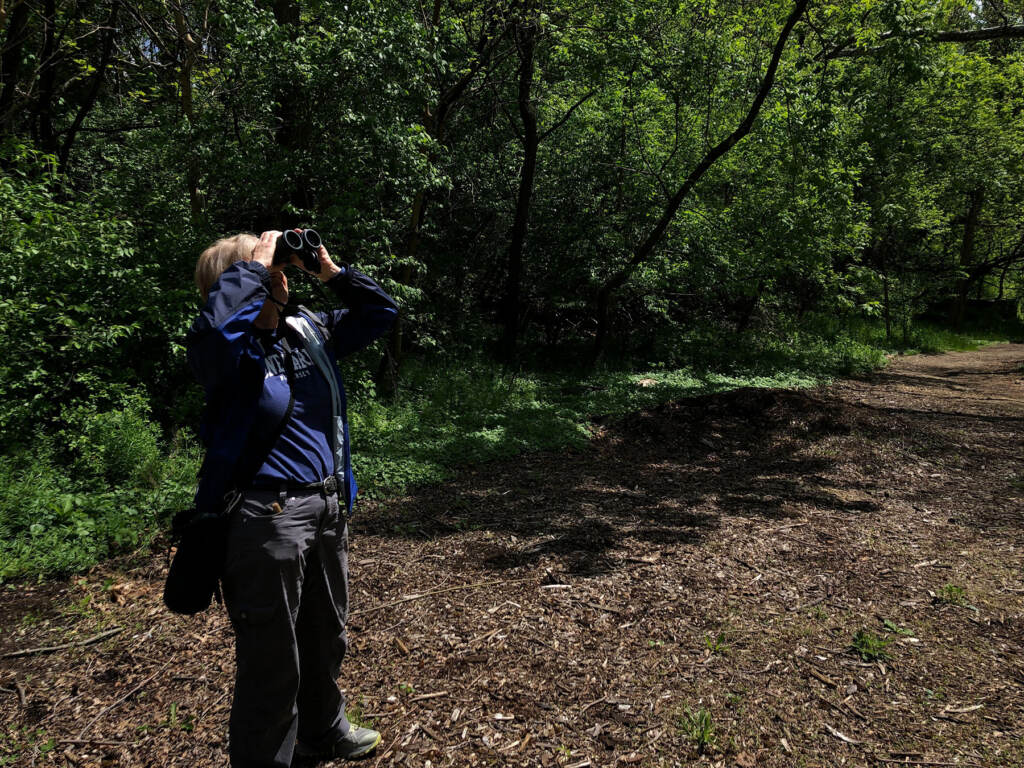
Ecologists also have to account for the growing volume of crowdsourced data each year, Forister said, when studying how wildlife populations change over time — something key to tracking the effects of climate change. It might take a while, but at some point, Philly’s annual City Nature Challenge could produce “amazing” data on the effects of warming.
“Just keep at it with the annual records,” Forister said. “We don’t really know how quickly we’ll be able to see something, but it might not be as long as people think.”
In the meantime, Sasikumar, who helped bring the City Nature Challenge to Philly, is happy if the competition gets people outside and passionate about nature.
“There’s a lot of nature in Philly, and people need to know that it’s there, so we can protect it,” he said.
WHYY is your source for fact-based, in-depth journalism and information. As a nonprofit organization, we rely on financial support from readers like you. Please give today.



